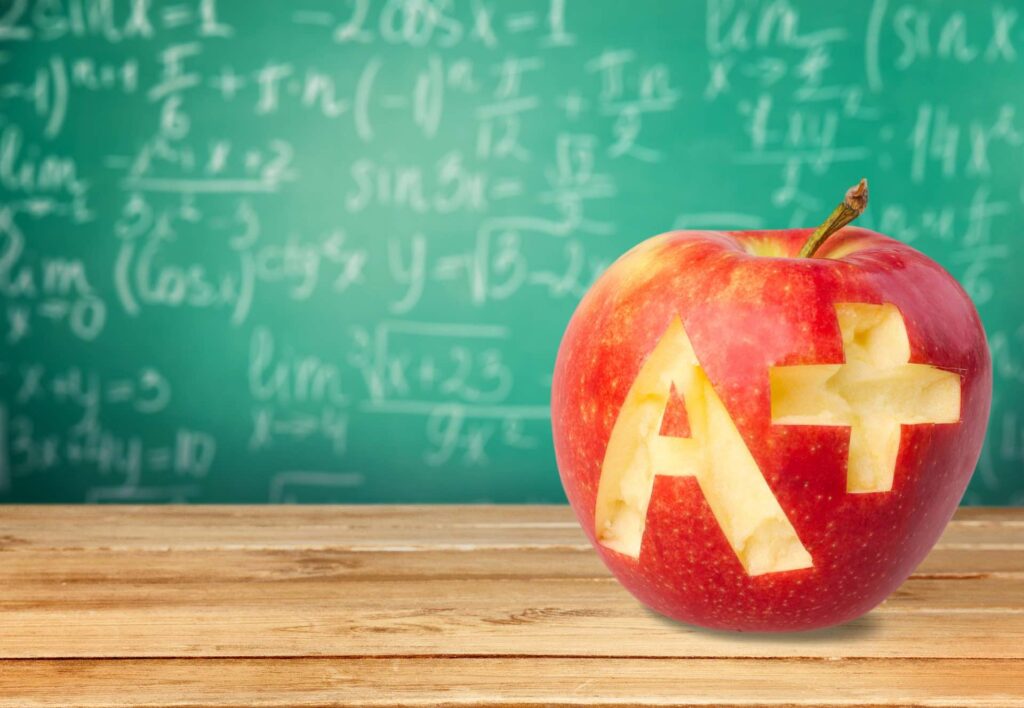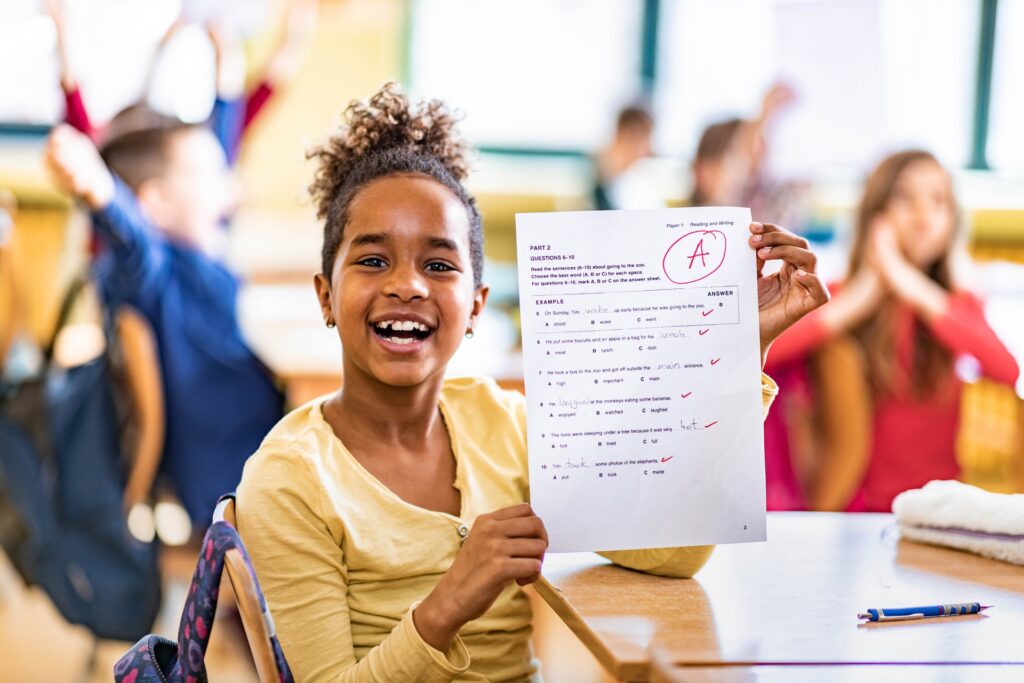Understanding report cards is crucial for parents and students alike. This Report Card Guide can help! This comprehensive guide on report cards is designed to help you understand the components and significance of report cards as well as how to use them effectively for your child’s academic progress.
This guide covers everything from the basics of report cards to interpreting grades, recognizing the importance of teacher feedback, utilizing report cards for academic improvement, and tips for discussing them with your child.
- What is a report card?
- How do you interpret grades on a report card?
- Understanding different grading systems
- Importance of teacher feedback on report cards
- Using report cards to improve academic performance
- Tips for discussing report cards with your child
What Is a Report Card?
A report card—sometimes called an assessment, progress report, or achievement report—is a formal document that schools issue to communicate a student’s academic performance and progress over a specific period, usually a term or semester.
It provides valuable insights into a child’s strengths, areas for improvement, and overall progress in school, serving as a crucial communication tool between teachers and parents.
Check out these five report discussion tips.
How to Interpret Grades on a Report Card?
Grades are the most visible part of a report card and can vary in format—letters (A, B, C), numbers (1-100), or descriptive categories (Exceeds Expectations, Meets Expectations, etc). It is key to understand what each grade means and how it reflects your child’s performance.
Understanding Different Grading Systems
Grading systems vary widely. Knowing the system used by your child’s school ensures you interpret report cards correctly. Not sure what grading system your state or local district uses? Review this Parent Guide to State and Local Reports from the Department of Education.
Interpreting grades correctly is essential for assessing your child’s academic performance. Different schools use different grading systems, so understanding what each grade represents is important.
Report Card Letter Grades

Letter grades are widely used and easy to understand. Here’s a typical scale:
- A+/-: Excellent performance
- B+/-: Good performance
- C+/-: Average performance
- D+/-: Below average performance
- F: Failing
Report Card Numeric Grades
Numeric grades provide a more detailed view of a student’s performance. For example:
- 90-100: Excellent
- 80-89: Good
- 70-79: Average
- 60-69: Below average
- Below 60: Failing
Report Card Guide: Descriptive Categories
These categories offer qualitative insights, often used in younger grades:
- Exceeds Expectations: The student surpasses the expected standards.
- Meets Expectations: The student meets the expected standards.
- Approaching Expectations: The student is nearing the expected standards.
- Needs Improvement: The student is below the expected standards.
Understanding these systems helps you gauge where your child stands academically and where they might need additional support.
Importance of Teacher Feedback on Report Cards
Teacher feedback is an essential part of report cards that can help you better understand your child’s grades. Teacher comments provide you, as a parent, and your child with context for the grades, offering a better understanding of your child’s performance beyond mere numbers. Detailed feedback can help shed light on your child’s behavior, participation, and effort in class, giving you a clearer picture of your child’s school experience.
Behavior and Participation
This feedback provides insights into how your child engages in the classroom environment. Teachers can comment on social interactions, group work contributions, and overall classroom demeanour, helping to identify any social or behavioral issues early on.
Effort and Attitude
Comments regarding a student’s diligence and attitude toward learning are crucial. They highlight the student’s work ethic, perseverance in facing challenges, and overall enthusiasm for learning. This feedback can help you, as a parent, understand your child’s motivation levels and areas where encouragement might be needed.
Specific Strengths and Weaknesses
A teacher’s detailed notes and comments on areas where your child excels or struggles are invaluable to you as a parent. They not only pinpoint specific academic strengths and weaknesses but also provide actionable insights into how these areas can be addressed. This can guide you as a parent in supporting your child’s education more effectively at home.
Positive feedback reinforces good behavior and effort, encouraging students to continue their hard work and maintain their positive attitude. Constructive feedback, on the other hand, is crucial for guiding improvements. It highlights areas needing attention and suggests strategies for overcoming challenges, fostering a growth mindset in students.
Teacher feedback on report cards is a multifaceted tool that is vital to your child’s educational journey. It bridges the communication gap between school and home, ensuring parents are well informed and involved in their child’s progress.
Recognizing Patterns in Report Card Comments
Comments on report cards can provide valuable insights into a student’s academic behavior and performance. Identifying recurring themes in the feedback can help highlight consistent strengths and areas needing ongoing support.
Investing time in understanding and effectively utilizing report cards can significantly impact your child’s academic journey.
Recognizing patterns in report card comments is essential:
- Repeated strengths are areas where your child consistently excels.
- Recurring challenges are subjects or skills that frequently need improvement.
- Behavioral insights are comments on class participation, effort, and attitude.
Recognizing these patterns can address ongoing issues and reinforce positive behaviors.
Using Report Cards to Improve Academic Performance
Report cards are not just a reflection of past performance but a valuable tool for future improvement. Here’s how to use report cards to improve your child’s academic performance.
Identify Areas of Improvement
Carefully review the report card to pinpoint subjects or skills where your child scores lower. Look beyond the grades to understand specific feedback from teachers. This will help recognize the exact areas that need attention.
Set Achievable Goals
Once you identify the areas needing improvement, work with your child to set realistic academic goals. Ensure these goals are specific and time-bound to provide clear direction and motivation.
Foster a Positive Attitude
Encourage a positive attitude toward learning and improvement. Celebrate small successes and progress to build confidence and keep your child motivated. Address challenges with a growth mindset, emphasizing that effort and perseverance lead to improvement.
Communicate with Teachers
Maintain open communication with your child’s teachers to stay informed about their progress and any additional support they might need. Teachers can provide valuable insights and suggest strategies tailored to your child’s learning style and needs.
Engage in Continuous Review
Review and discuss report cards regularly with your child. Use these discussions to reflect on past performance, celebrate achievements, and set new goals. Continuous review helps maintain focus and adapt strategies to support your child’s academic growth.
By actively using report cards in these ways, you can turn them into a powerful tool for enhancing your child’s academic performance and fostering a love for learning.
Tips for Discussing Report Cards with Your Child
It is crucial to have open, supportive conversations about your child’s report card. Here are some tips to make these discussions productive and encouraging for everyone involved.
First, Celebrate Successes
It’s important to acknowledge and celebrate areas where your child performs well with your child. Recognizing their achievements builds confidence and reinforces positive behaviors. Start the conversation by highlighting their strengths and expressing love and support for their hard work.
Stay Calm and Supportive
Approach areas of weakness with your child calmly and supportively. Avoid reacting negatively or showing disappointment. Instead, focus on understanding the challenges your child faces and discuss ways to overcome them together.
Encourage Open Communication
Allow your child to express their feelings and perspectives on their grades. Listen actively and validate their experiences. This creates a safe space for them to share their thoughts and feelings, which can help identify underlying issues affecting their performance.
Focus on Effort, Not Just Results
Emphasize to your child the importance of effort and improvement over perfect grades. Highlight instances where they have put in significant effort, regardless of the outcome. This fosters a growth mindset, encouraging them to view challenges as opportunities to learn and grow.
Be Positive
Start the conversation on a positive note. Acknowledge your child’s efforts and any progress they have made, no matter how small. Positive reinforcement can motivate them to continue working hard.
Be Constructive
When addressing your child’s areas needing improvement, be constructive rather than critical. Discuss specific strategies and steps they can take to improve. Offer your support and resources, such as tutoring or additional study materials, to help them succeed.
Set Goals Together
Encourage your child to set achievable goals and work towards them. Collaboratively set specific, measurable, attainable, relevant, and time-bound (SMART) goals. This will give your child a clear roadmap for improvement and help them stay focused and motivated.
By following these tips, you can make report card discussions a positive and constructive experience, helping your child feel supported and motivated to achieve their best.
Have more report card questions? Schedule a report card consultation with GradePower Learning. Click here to find a location near you.





